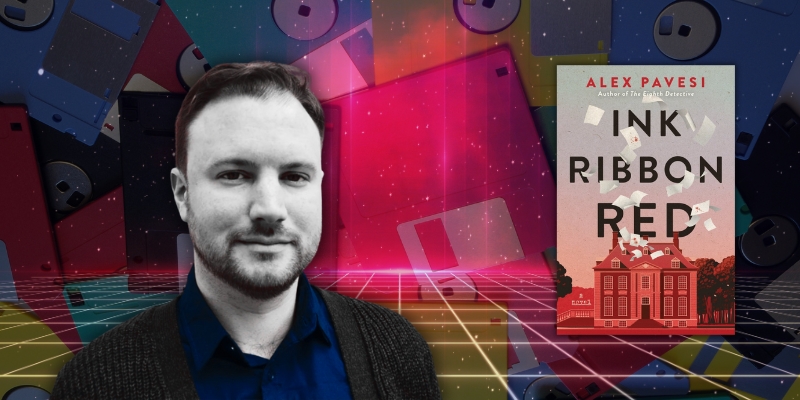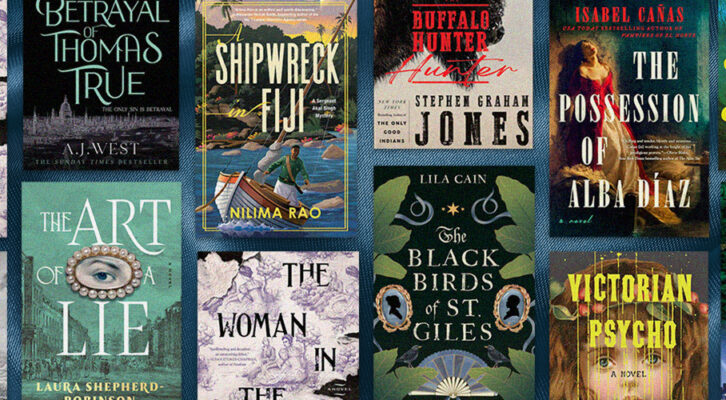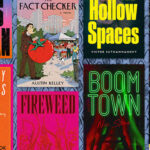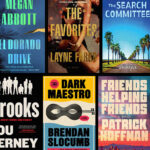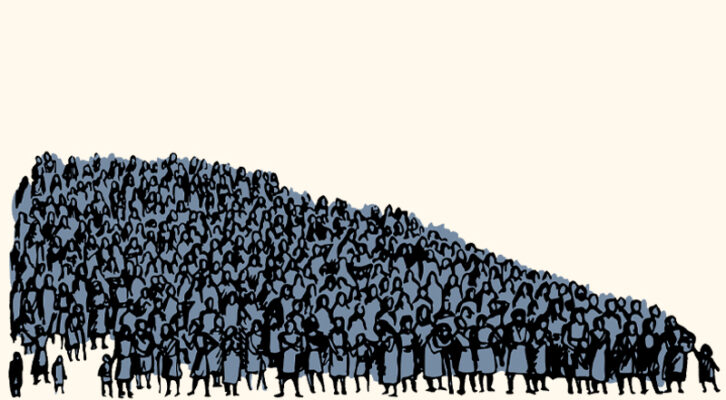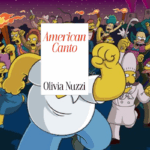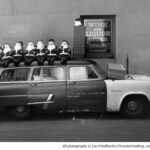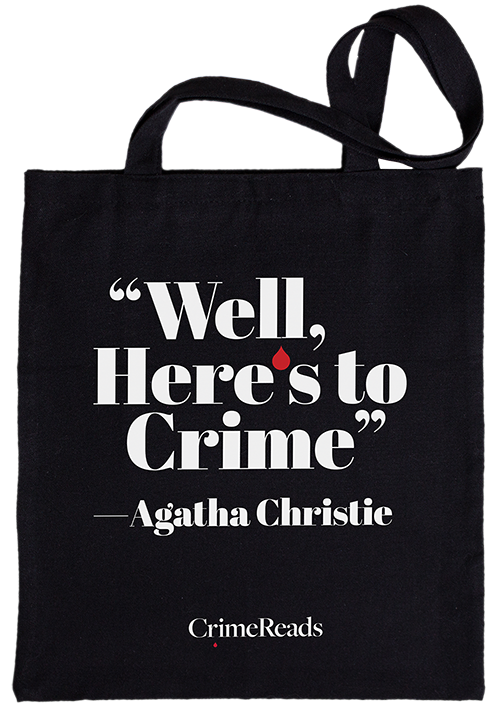Do crime novels work better when set in the past or the present? I found myself wondering this while I was writing my latest novel, Ink Ribbon Red.
The story has a familiar setup: six friends, who originally met at university, gather at a large house in rural England to celebrate the youngest of the group turning thirty. Their reunion takes place over a three-day weekend in May. By Monday morning, at least one of them will be dead.
It’s a story that could have been set at almost any time since, say, the 1950s or 1960s—whenever it was that changing social mores made it acceptable for a mixed group of wealthy young people, mostly single, to retreat to the countryside, without any servants or chaperones getting in the way—but I initially planned to set it in the present. With no pressing need to set it in the past, this seemed like the wisest choice: why complicate things?
And besides, the book’s influences were for the most part contemporary; when I was pitching it to my editor, I had in mind, as comparative titles, such remote-location thrillers as The Hunting Party by Lucy Foley and An Unwanted Guest by Shari Lapena, both of which have contemporary settings.
Of course, there are several widely discussed problems with setting crime fiction in the present day, notably the fact that modern technology means anyone can call for help at any time, unless something has conveniently gone wrong with the phone service (convenient for the plot, not so much for the characters), and the fact that the internet makes it trivial to check on someone’s identity.
But neither of those issues were relevant in my case. None of the characters in Ink Ribbon Red know that they’re in jeopardy—or even that someone might be deceiving them—until it’s too late.
Nonetheless, I felt the lure of the past.
Generally speaking, I like my crime fiction to be playful. The less real it feels, the better. There’s a reason that in the Golden Age classics of the genre, bodies are often found in bizarre, incongruous locations: lying face-down on a golf course, bleeding out in a dentist’s chair or, famously, tucked between the shelves of a library. Anything that makes the killing feel less real makes the book more fun.
I think the same thing can be achieved, to some extent, by setting a book in the past. The extra distance added by placing the characters in a world that is no longer familiar to us makes the whole thing feel, to me at least, more playful and slightly less depressing, slightly less like it might actually be happening.
This last point was of particular importance for Ink Ribbon Red, since throughout the book the reader is encouraged to question whether certain incidents are, in fact, actually happening. It’s a wet weekend in the springtime. The six friends are passing the time by playing a parlor game that requires them to imagine one another’s murders.
They then type up these apocryphal versions of events using the typewriters that give the novel its title. Fiction and reality intertwine, to the point that it’s impossible to know where one ends and the other begins—until all is explained at the end of the book.
To make this work, I wanted the entire text to have an air of unreality. Ultimately, I wanted to set it in the past because the past feels less real than the present.
So I settled on a compromise: the book would take place in the recent past. The year 1999, to be precise. That was the year I turned sixteen, so I was able to call on my memory for most of the details.
Pound coins were widely used in those days; they were thicker, with corrugated rims. Mobile phones (notably not smart) were still a relative novelty and payphones were still ubiquitous, their huge handsets bulky enough to double as murder weapons. Takeaway coffees were more likely to be served in styrofoam than cardboard cups. People smoked indoors.
And everything electronic was fitted with an LCD screen in a dulled avocado color. One of the characters in the novel—the workaholic of the bunch—brings his laptop with him for the weekend, but they decide as a group that the pair of typewriters found among the house’s many antiques offer a more practical way of sharing their stories.
It was only while writing this that I realized the recent past, in particular, feels not only unreal, but uncanny too; the term “the uncanny valley” is used in computer graphics to refer to depictions of humans that look almost life-like, but fail in some of the smaller details. The term could equally be used for the recent past, being almost identical to the present but alien and strange at the same time: a subtly altered version of something familiar.
It’s a fact made use of—to sensational effect—in Kazuo Ishiguro’s Never Let Me Go, which blends its science-fictional elements into an early 90s setting, filled with cassette tapes and flimsy, foam-covered headphones, both long out of date by the time the novel was published in 2005.
In my view, the best setting for a crime novel is neither the past nor the present, but the recent past, on account of its being the most uncanny.Similarly, one of the best horror films of recent years, It Follows, makes use of an indecipherable chronological setting to great, unnerving effect: one of the characters uses an e-reader, while the sets behind them are populated with cathode-ray tube televisions and posters pulled from magazines.
Both examples manage to conjure a dreamlike quality, familiar but unsettling. I wanted Ink Ribbon Red to have, at least in part, a similar sense of otherworldliness.
So this is the answer I finally settled on: in my view, the best setting for a crime novel is neither the past nor the present, but the recent past, on account of its being the most uncanny, the most unsettling and the downright creepiest.

